- HOME
- Research
- Past Works
- Mechanism for left-right asymmetry in gene expression in early development of mice
Past Works
Mechanism for left-right asymmetry in gene expression in early development of mice
In mice early embryo left-right asymmetry of gene expression is first observed in left and right sides of node induced by the right-to-left nodal flow. From a series of experiments, we identified regulations between responsible genes, Cerl2 and Wnt, for generating left-right asymmetry. The regulatory linkages constitute a network system including multiple feedbacks. We study this system by mathematical modeling to understand the dynamical property of the whole system and to identify the principle mechanism by which the system generates asymmetrical gene expression patterns. We developed ordinary differential equations model for the activities of responsible genes, Cerl2 and Wnt based on the knowledge of regulations between genes. We first analyzed the model by numerical simulation and determined the conditions of successful parameter values including reaction rates and degradation rates by exhaustive search. We found that parameters can be categorized into two groups and they should be balanced to reproduce the observed gene expression patterns. We then analyzed the model mathematically and identified two essential mechanisms for asymmetric gene expressions, that is, “bi-stable switch” and “temporal transition to asymmetric state”. The former is observed in much broader area of parameter space.
The model predicts that two mechanisms show different behavior if the signal is perturbed after asymmetric gene expression appears, that is, while “bi-stable” system can keep asymmetric gene expression after perturbation, “temporal transition” system cannot. Accordingly, we tested the hypothesis by a perturbation experiment and confirmed that the actual system adopts “bi-stable switch” mechanism. The “bi-stable switch” system seems to be adaptive in the meaning that it stabilizes asymmetric gene expression even under the noisy and unstable flow signal. This work is collaboration with Dr. Hamada and Dr. Nakamura in Osaka University.
